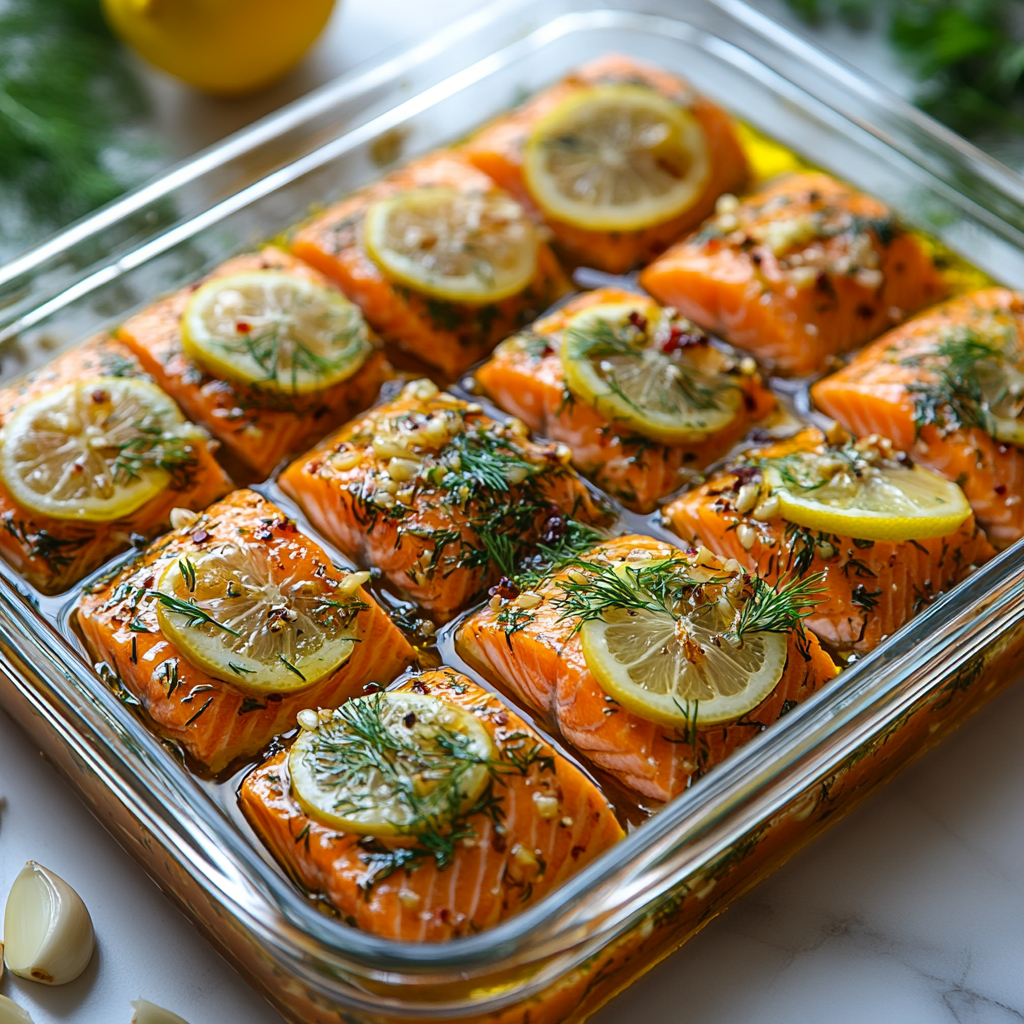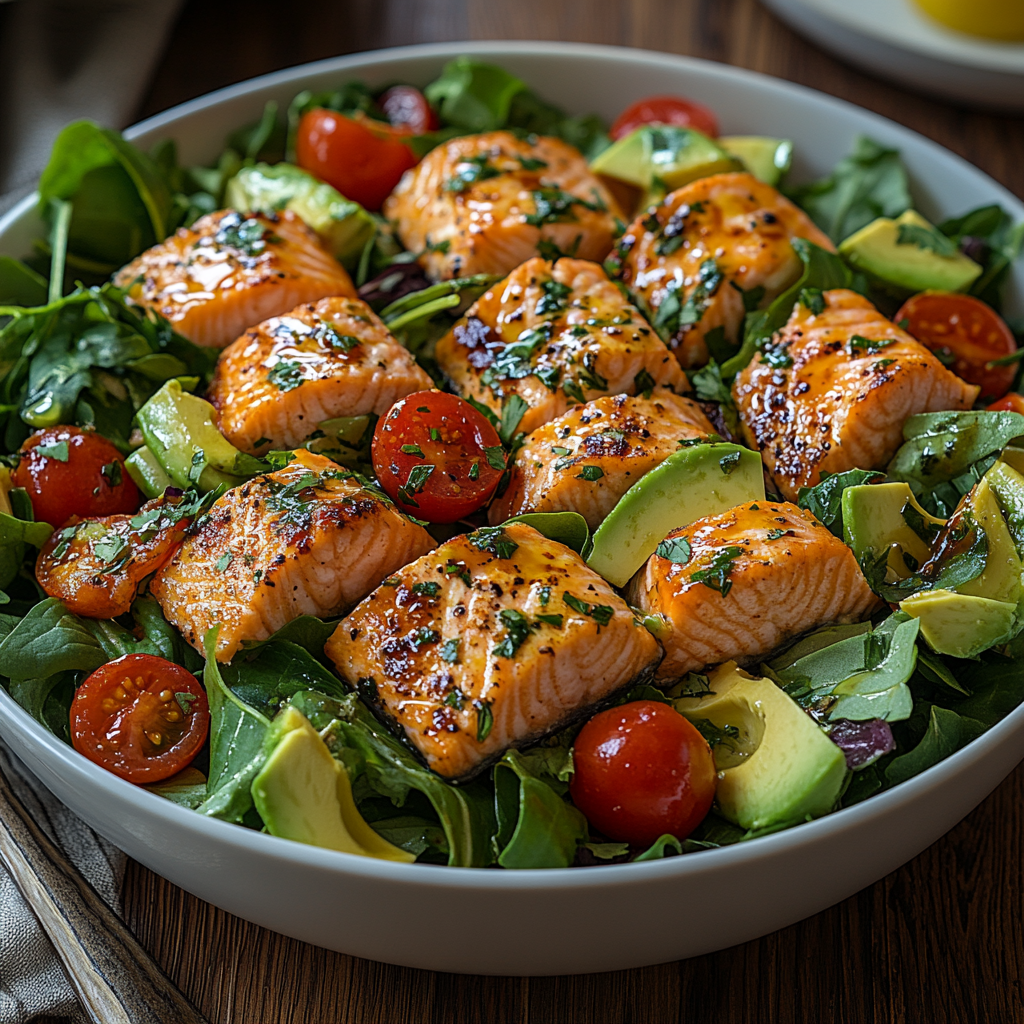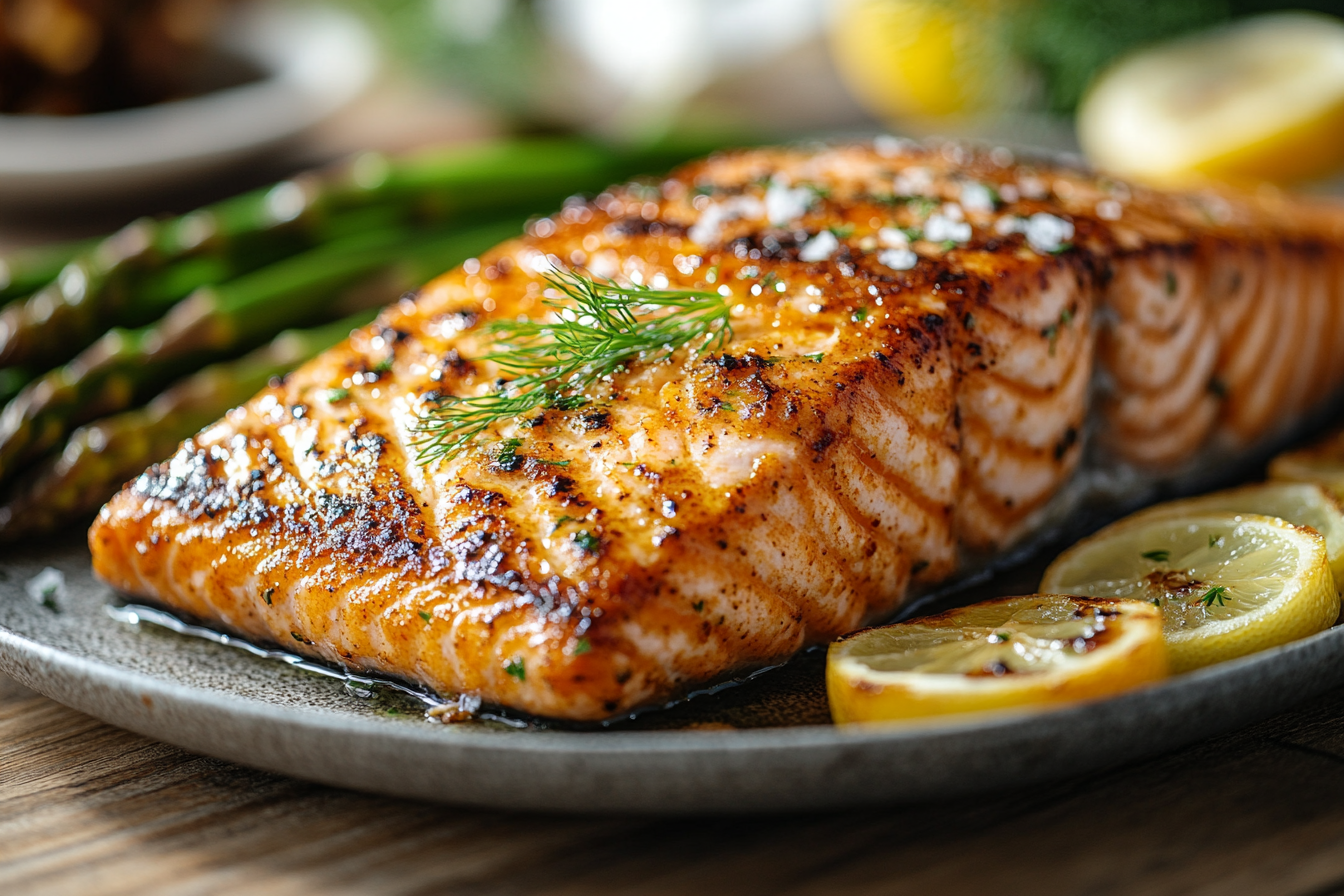Introduction
King Salmon, also known as Chinook, is the king of the salmon family, and for good reason. This species is prized for its rich, buttery flavor, high oil content, and tender flesh. Whether you’re an experienced cook or just starting, this guide will walk you through a foolproof King Salmon recipe that will leave your taste buds satisfied. We’ll cover everything from selecting the best fish to cooking techniques and serving suggestions, ensuring you achieve perfection every time with your King Salmon recipe.
The Nutritional Powerhouse: Why King Salmon?
Before diving into the King Salmon recipe, let’s explore why King Salmon should be a staple in your diet. King Salmon is not only delicious but also packed with nutrients. It’s an excellent source of high-quality protein, omega-3 fatty acids, vitamins, and minerals. Omega-3s are particularly important for heart health, reducing inflammation, and supporting brain function. The high-fat content of King Salmon also contributes to its rich flavor, making it a favorite among chefs and home cooks alike. Did You Know? Just a 3-ounce serving of King Salmon provides more than a day’s worth of vitamin D, which is essential for bone health and immune function.
Selecting the Perfect King Salmon
The success of your King Salmon recipe starts with choosing the right fish. Here are some tips to ensure you’re getting the best quality:
- Color and Appearance: Look for salmon with a vibrant, deep-orange color. The flesh should be firm and moist with a shiny surface.
- Smell: Fresh King Salmon should have a clean, ocean-like smell. Avoid any fish that has a strong, fishy odor.
- Source: Whenever possible, opt for wild-caught King Salmon. Wild salmon tends to have a more robust flavor and better nutritional profile compared to farmed varieties.
- Sustainability: Check for sustainability certifications such as the Marine Stewardship Council (MSC) label, ensuring your salmon is sourced responsibly.
For tips on storing your fish before cooking, visit our guide on Smoked Salmon Recipe Guide, where we discuss the best practices for preserving freshness for your King Salmon recipe.
Essential Ingredients for King Salmon Recipe
To prepare the perfect King Salmon recipe, you don’t need a long list of ingredients. Simplicity is key to letting the natural flavor of the fish shine. Here’s what you’ll need:
- 4 King Salmon fillets (6 oz each): Ensure they are fresh and of high quality.
- 2 tablespoons olive oil: Helps in enhancing the flavor and prevents the salmon from sticking.
- 1 lemon, sliced: Adds brightness and acidity that balances the richness of the salmon.
- 3 cloves garlic, minced: Provides depth and a subtle kick of flavor.
- 1 tablespoon fresh dill, chopped: Dill complements the flavor of salmon beautifully.
- Salt and pepper to taste: Essential seasonings to enhance the natural taste of the fish.
- Optional: A dash of smoked paprika or cayenne pepper for a bit of heat.
These ingredients are readily available, and when combined, they create a King Salmon recipe that is both elegant and easy to prepare.
Preparing the Marinade
Marinating King Salmon is an excellent way to infuse flavor into the fish and keep it moist during cooking. Here’s how you can prepare a simple yet delicious marinade for your King Salmon recipe:

- Combine the Ingredients: In a small bowl, whisk together olive oil, minced garlic, fresh dill, salt, and pepper. For those who enjoy a bit of spice, adding a dash of smoked paprika or cayenne pepper can bring an extra layer of flavor to your King Salmon recipe.
- Marinating the Salmon: Place the King Salmon fillets in a shallow dish and pour the marinade over them. Make sure each fillet is thoroughly coated. Cover the dish with plastic wrap and refrigerate for at least 30 minutes. This allows the flavors to penetrate the fish, making each bite more flavorful.
Pro Tip: Avoid marinating the salmon for too long (over an hour), as the acidity from the lemon can start to “cook” the fish, altering its texture.
Cooking King Salmon: Techniques for Perfection
King Salmon is incredibly versatile and can be cooked using various methods, including baking, grilling, and pan-searing. Each method offers a unique flavor profile and texture, so choose the one that best suits your preference for your King Salmon recipe.

Baking King Salmon
Baking is one of the easiest ways to cook King Salmon, ensuring even cooking and a tender result.
- Preheat the Oven: Start by preheating your oven to 400°F (200°C).
- Prepare the Baking Sheet: Line a baking sheet with parchment paper or aluminum foil. This makes cleanup easier and prevents the salmon from sticking.
- Arrange the Salmon: Place the marinated salmon fillets on the prepared baking sheet. Arrange lemon slices on top of each fillet for added flavor and moisture.
- Bake the Salmon: Bake for 12-15 minutes, depending on the thickness of the fillets. The salmon is done when it flakes easily with a fork and has reached an internal temperature of 145°F (63°C).
Serving Suggestion: Pair baked King Salmon with creamy mashed potatoes for a hearty meal. Check out our Mashed Potatoes Gravy Recipe for a side dish that complements the rich flavor of the King Salmon recipe.
Grilling King Salmon
Grilling King Salmon imparts a smoky flavor and a slightly crispy exterior, making it a favorite for summer cookouts.
- Preheat the Grill: Preheat your grill to medium-high heat. Ensure the grates are clean and well-oiled to prevent sticking.
- Grill the Salmon: Place the salmon fillets skin-side down on the grill. Grill for 6-8 minutes per side, depending on the thickness of the fillets. The salmon should easily lift from the grill when it’s ready to be flipped.
- Check for Doneness: Use a meat thermometer to check the internal temperature, aiming for 145°F (63°C). If you prefer your salmon more on the medium side, remove it from the grill at around 135°F (57°C) and let it rest for a few minutes.
Serving Suggestion: Grilled King Salmon pairs wonderfully with a fresh salad or grilled vegetables. For seafood lovers, consider a seafood pasta dish like our Company Shrimp Pasta Salad Recipe.
Pan-Searing King Salmon
Pan-searing is a quick method that results in a crispy, golden-brown crust while keeping the interior moist and tender.
- Heat the Skillet: Heat a tablespoon of olive oil in a heavy-bottomed skillet over medium-high heat.
- Sear the Salmon: Place the salmon fillets skin-side down in the skillet. Cook for 4-5 minutes, allowing the skin to crisp up. Flip the salmon and cook for another 4-5 minutes, or until the internal temperature reaches 145°F (63°C).
- Rest the Salmon: Remove the salmon from the skillet and let it rest for a few minutes before serving. This helps the juices redistribute, keeping the fish moist.
Serving Suggestion: Serve pan-seared King Salmon with a side of quinoa or wild rice for a nutritious and satisfying meal.
Delicious Serving Ideas
King Salmon is versatile and can be paired with a variety of side dishes to create a balanced meal. Here are some serving ideas to inspire your next dinner with this King Salmon recipe:
- Mashed Potatoes: Creamy mashed potatoes are a classic side dish that pairs perfectly with salmon. The smooth texture and rich flavor of the potatoes complement the fish’s tender meat. Learn how to make the perfect mashed potatoes with our Mashed Potatoes Gravy Recipe.
- Seasonal Vegetables: Roasted asparagus, sautéed spinach, or steamed broccoli add a fresh, healthy touch to your plate. These vegetables are light and don’t overpower the salmon’s delicate flavor.
- Grains: Quinoa, wild rice, or couscous are excellent choices for a nutritious and filling side. Their nutty flavors provide a pleasant contrast to the richness of the King Salmon recipe.
- Salads: A simple green salad with a lemon vinaigrette can balance the richness of the salmon, offering a refreshing bite in between.
- Pasta: For a more indulgent meal, pair your salmon with a creamy pasta dish. Consider adding a touch of lemon zest and fresh herbs to your pasta to enhance the overall flavor profile of your King Salmon recipe.
Wine Pairing with King Salmon
Pairing wine with King Salmon can elevate your dining experience. The right wine complements the fish’s rich flavor without overpowering it.
- White Wine: A crisp, acidic white wine like Chardonnay or Sauvignon Blanc is a classic choice. These wines have a bright, citrusy profile that cuts through the richness of the salmon, providing a refreshing balance to your King Salmon recipe.
- Red Wine: If you prefer red wine, a light-bodied Pinot Noir is an excellent option. The earthy, fruity notes of Pinot Noir harmonize with the salmon, especially if it’s grilled or smoked.
- Rosé: Rosé wines are versatile and can be paired with both baked and grilled salmon. The fruity, floral notes of a dry rosé add a delightful contrast to the savory fish.
- Sparkling Wine: For a celebratory touch, consider pairing your King Salmon with a glass of sparkling wine or Champagne. The effervescence and acidity cleanse the palate, making each bite of the King Salmon recipe even more enjoyable.
Leftover King Salmon: Creative Uses
Don’t let your delicious King Salmon go to waste. Here are some creative ideas for using leftovers:

- Salmon Salad: Flake the leftover salmon and toss it with mixed greens, avocado, cherry tomatoes, and a light lemon vinaigrette. This makes for a healthy, refreshing lunch. For a similar recipe, try our Delicious Avocado Stuffed with Shrimp and Crab Salad Recipe.
- Salmon Pasta: Incorporate leftover salmon into a creamy pasta dish. Simply reheat the salmon gently and toss it with pasta, olive oil, garlic, and a sprinkle of Parmesan cheese for a quick and tasty meal.
- Salmon Cakes: Combine flaked salmon with breadcrumbs, eggs, and your favorite seasonings to form patties. Pan-fry the patties until golden brown, and serve with a side of tartar sauce or aioli.
- Salmon Wraps: Use leftover salmon as the protein base for a wrap. Add lettuce, cucumber, avocado, and a dollop of yogurt or tzatziki for a light and satisfying meal.
- Salmon Tacos: For a twist on traditional tacos, use leftover salmon as the filling. Top with fresh salsa, avocado, and a squeeze of lime for a vibrant, flavorful dish.
Frequently Asked Questions about Cooking King Salmon
Q: How can I tell when King Salmon is fully cooked?
A: The best way to determine if salmon is fully cooked is by using a meat thermometer. The internal temperature should reach 145°F (63°C). Additionally, the salmon should flake easily with a fork, and the flesh should be opaque.
Q: Can I use frozen King Salmon for this recipe?
A: Yes, frozen King Salmon can be used, but make sure to thaw it completely in the refrigerator before cooking. Thawing in the fridge helps maintain the fish’s texture and flavor.
Q: What should I do if my salmon fillets are too thick?
A: If your fillets are thicker than usual, you may need to adjust the cooking time. For every half-inch of thickness, add an additional 2-3 minutes of cooking time. Always check the internal temperature to ensure it’s cooked through.
Q: Is it better to cook salmon with the skin on or off?
A: Cooking salmon with the skin on helps protect the flesh from drying out and adds a crispy texture if pan-seared or grilled. If you prefer, you can remove the skin after cooking.
Q: How can I keep my salmon from sticking to the grill or pan?
A: To prevent sticking, make sure your grill or pan is preheated and well-oiled. Placing the salmon skin-side down first also helps, as the skin is less likely to stick.
Conclusion
Cooking King Salmon to perfection is easier than you think, especially with the right techniques and a bit of preparation. Whether you choose to bake, grill, or pan-sear your salmon, this guide provides you with all the tips and tricks you need to create a delicious, restaurant-quality meal at home. Don’t forget to experiment with different side dishes and wine pairings to make the meal truly your own. For more seafood recipes and culinary inspiration, be sure to explore our blog, including dishes like our Smoked Salmon Recipe Guide and Company Shrimp Pasta Salad Recipe. Happy cooking!

